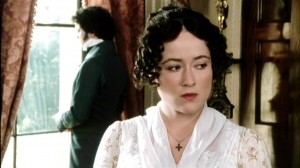Oh, innocent victims of Cupid,
Remember this terse little verse;
To let a fool kiss you is stupid,
To let a kiss fool you is worse.— E. Y. Harburg
To love is to admire with the heart; to admire is to love with the mind. — Theophile Gautier
In the arithmetic of love, one plus one equals everything, and two minus one equals nothing. — Mignon McLaughlin
To love someone deeply gives you strength. Being loved by someone deeply gives you courage. — Lao-Tzu
Here is the rest of the discussion of romance terms to finish defining yesterday’s chart.
10 Elements of a Romance.
Their definitions of each element:
Boy Meets Girl
An event, goal or circumstance occurs to bring our hero and heroine together.
Interest/Need
Something about their own situation makes their heart vulnerable to romance.
Why Not
Obstacles between the hero and heroine, and True Love conspire to separate them
 Wooing
Wooing
Events or situations allow the hero and heroine to fall in love
Sparks
Dialogue and action create romantic tension
Kiss
Leading to sexual tension
 Breakup
Breakup
The biggest Why Not rises to push them apart
Why
The core reason they belong together saves the day
Big Gesture/Sacrifice
The Hero or Heroine are able to make the Big Gesture/Sacrifice to stay together.
Happily Ever After
They find the love they’ve always longed for.
~ ~ ~
13 Elements of Romance.
My summary of each element:
Rejection of society, loneliness
The hero and/or heroine don’t feel like they fit in the world they live in.
First meeting– mirrored recognition
Recognizing a kindred soul (consciously or unconsciously). Sometimes only the reader sees it at first.
Deep Goodness in relationships with others
From C.S. Lewis: “When two people achieve lasting happiness, this is not solely because they are great lovers but because they are also—I must put it crudely—good people; controlled, loyal, fair-minded, mutually adaptable people.”
This is often the bits where he’s good with children, or she’s a willing caregiver (or friend) to an elderly neighbor.
Unique need for each other (but not dependance)
Something in the beloved *fits* the other in a way no one else can duplicate.
Reader love/longing
The reader must fall in love with both hero & heroine for the story to be successful.
An external obstacle (or more than one)
So there’s not just unseen angst working people over. (Grrr! *Those* are the books that embarrass me.)
A mistake, or series of mistakes
Something that comes out of being a flawed human. Not unique to the character, necessarily, but something anyone might do.
Witty repartee or deep conversation
Intellectual, soul-based growing toward each other.
The moment of connection/ vulnerability
Embracing the risk of being rejected. One advantage of single POV: the response is “unknown.” (Romances usually have two points of view, his and hers).
Equality in development
The man and the woman both need to grow before they’ve reached (to use Lewis’s word) “decency” and can sustain that happy relationship.
Fixing mistakes
Sometimes they’re too big for one person to fix, but the gesture as to be made, as part of a genuine owning of the wrongness of the mistake.
Sacrifice
It can’t cost nothing. Should be unique to the individual and his/her needs & personality.
Return to society
An accepting of one’s place in the world. Even if s/he didn’t fit before, the beloved ensures one is no longer alone, and can endure, even triumph, over the challenges that once drove him/her away.
~ ~ ~
The thing I find most enjoyable about Harrison’s model is how she has expectations in mind for the reader as well as more for the characters. It is a fabulous way to keep your audience and story-goals enmeshed.




